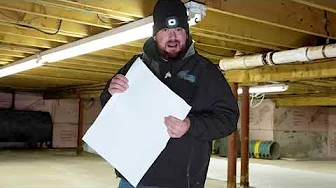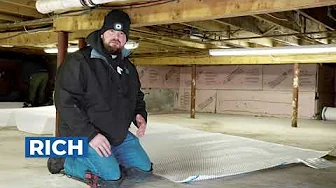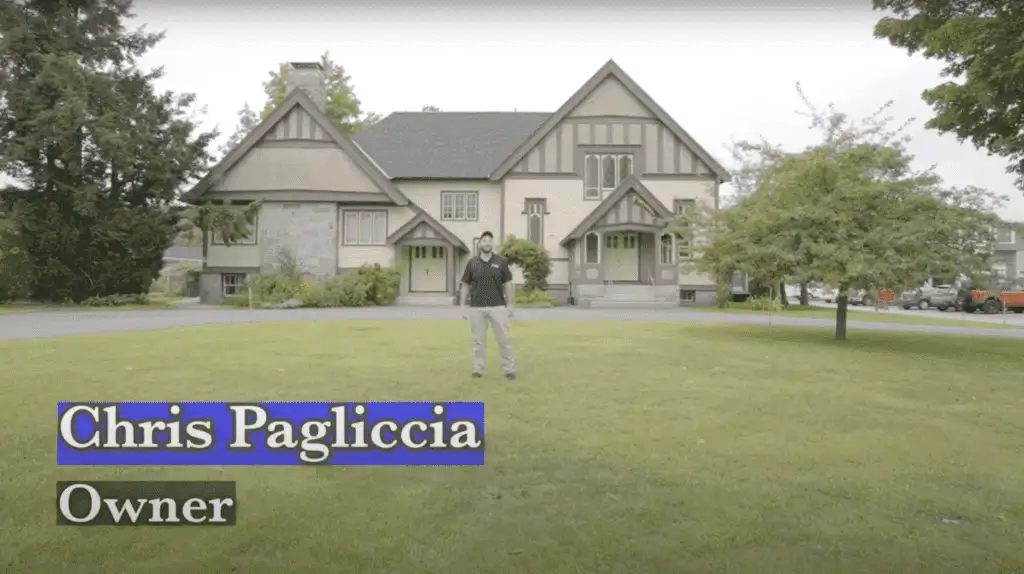Foundation Crack Repair Bedford NH
Foundation cracks are a common issue for homeowners in Bedford, NH, due to the region’s weather patterns, soil composition, and seasonal shifts. Cracks may seem small, but they can indicate underlying structural problems that require attention. Addressing foundation cracks early can protect your home’s structural integrity and save you from costly repairs in the future.
Real People - Real Great Results
Crawl Space Video Playlist
Common Causes of Foundation Cracks
Foundation cracks rarely appear without reason—they’re the physical signs of forces at work beneath your home. In Bedford, NH, these forces are amplified by the local climate and soil composition. Let’s break down the most common culprits that cause your foundation to crack and what they really mean for your home.
1. Soil Movement: The soil underneath your home is constantly shifting, even if you can’t see it. In Bedford, where expansive soils are common, this movement can be magnified by seasonal changes. During wet periods, soils swell as they absorb moisture; in drier spells, they contract. The result? Your foundation is pulled in different directions, leading to cracks. Add in the freeze-thaw cycles of New Hampshire winters, and the stress on your foundation becomes even harder to ignore. This continuous push and pull is an invisible yet relentless threat.
2. Water Damage: Water doesn’t just wash away dirt—it slowly attacks your foundation. Poor drainage systems, clogged gutters, or natural grading issues can cause water to pool around your home. Over time, this moisture saturates the soil and exerts hydrostatic pressure against foundation walls. Even a seemingly minor pooling issue can lead to cracks if it’s not addressed. In Bedford, this is particularly problematic during spring rains, when runoff can overwhelm unprepared drainage systems.
3. Settling Foundations: No foundation is built on perfectly stable ground. Over time, homes naturally “settle” into the soil. While some settling is harmless and often results in small, cosmetic cracks, uneven settling is a bigger problem. It typically occurs when the soil was improperly compacted during construction or when the local soil distribution is uneven. The result can be jagged or widening cracks that signal trouble below the surface.
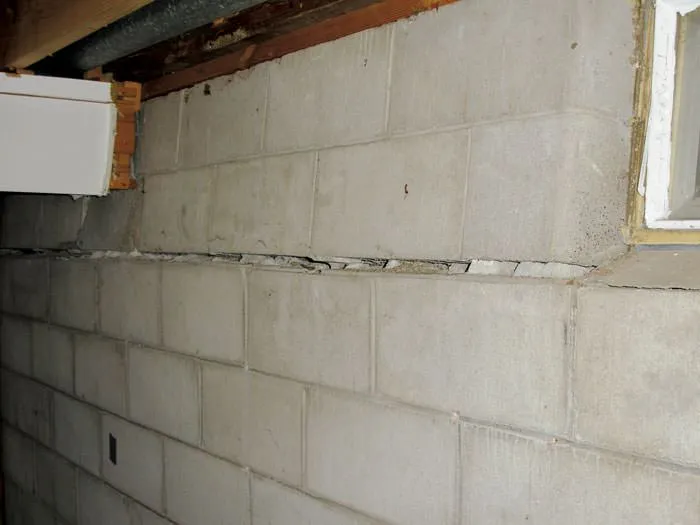
4. Construction Material Wear: Not all materials age gracefully, and concrete is no exception. While it’s one of the most durable materials used in home construction, Bedford’s weather still takes its toll. Repeated temperature shifts—think freezing winters and humid summers—create stress within the concrete itself. Water can also seep into smaller cracks and expand when it freezes. Older homes are particularly vulnerable, as decades of exposure compound the effects of wear, making cracks in these properties both more common and more serious.
Foundation cracks aren’t just a cosmetic inconvenience. Each one tells a story about what’s happening beneath your home. By understanding the root causes, you’re one step closer to protecting your most valuable asset.
Types of Foundation Cracks and What They Indicate
1. Hairline Cracks
Hairline cracks are the least intimidating—and often the most common—foundation cracks you’ll encounter. These ultra-thin cracks are usually the result of minor settling or the natural shrinkage of concrete as it cures. While they’re generally a cosmetic issue, dismissing them altogether isn’t wise. Even harmless-looking cracks can become entry points for water or pests over time. Keep an eye on them, and if they start to widen, it might be time to call in an expert.
2. Vertical Cracks
Vertical cracks, running straight up and down (or close to it), are generally low on the danger scale. They often occur due to normal settling or minor shifts in soil beneath your foundation. That said, they can let moisture seep into your basement or crawl space if left unsealed. The good news? These cracks are relatively easy to repair, typically with epoxy injections or polyurethane sealants. Just don’t ignore them for too long, especially if water intrusion or surface staining starts to appear.
3. Horizontal Cracks
Now we’re in red-flag territory. Horizontal cracks are your foundation’s way of telling you it’s under significant lateral pressure, often from hydrostatic forces in the surrounding soil. When water builds up in the ground after heavy rain or poor drainage, it can push against your walls, causing them to bow and crack. This isn’t a DIY fix—it’s a “call a professional yesterday” kind of problem. Left unchecked, horizontal cracks could signal structural instability that affects the safety of your entire home.
4. Stair-Step Cracks
Stair-step cracks are most commonly found in brick or block foundations and, true to their name, resemble a set of uneven stairs. These cracks are a sign of uneven settling, often caused by shifting or poorly compacted soil. While they might not look as alarming as horizontal cracks at first glance, they’re a strong indicator of load-bearing issues. Think of them as slow-burn damage: The longer you wait to address them, the steeper the eventual repair costs will climb. Get ahead of the problem by consulting a structural specialist.
Methods for Foundation Crack Repair
1. Epoxy or Polyurethane Injection
When it comes to sealing smaller cracks, epoxy or polyurethane injection is the go-to method. It’s straightforward, effective, and doesn’t require ripping apart half your foundation. For hairline or narrow vertical cracks that aren’t posing a structural threat, this process is ideal. Contractors inject a liquid epoxy or polyurethane resin directly into the crack, which then hardens to create a waterproof, pest-resistant seal. Epoxy also restores some of the lost structural strength, making it a solid choice for non-structural repairs. Just keep in mind: if water’s been actively leaking through the crack, polyurethane is often preferred since it can flex slightly and move with your foundation.
2. Carbon Fiber Reinforcement
Horizontal cracks give zero room for casual vibes—they often mean trouble. When the soil outside your foundation wall pushes hard enough to cause horizontal cracking, carbon fiber strips step in as a reinforcement superhero. These ultra-strong strips are bonded to the foundation wall using heavy-duty epoxy. Their main job? To stop the crack from spreading and to stabilize the wall against further pressure. Carbon fiber doesn’t fix the crack itself but prevents future movement, making it perfect for adding strength without major intrusive repairs. It’s also quick to install, cost-effective, and unobtrusive once the repair is complete.
3. Underpinning
If your foundation is sinking or settling unevenly, you’ve crossed into “call the pros” territory. Underpinning involves stabilizing your foundation by adding extra support beneath it. Steel or concrete piers are driven deep into the ground until they hit solid, load-bearing soil or bedrock. Once installed, these piers lift and redistribute the weight of your home evenly. It’s a serious fix for a serious issue and can get expensive depending on how much of your foundation needs reinforcement. That said, underpinning is often the only reliable way to handle uneven settling and prevent further structural damage. It’s not just a repair—it’s a long-term investment in your home’s stability.
4. Grading and Drainage Improvements
Sometimes, the best offense is a good defense. Cracks caused by hydrostatic pressure or water infiltration often trace back to poor drainage around your home. Fixing grading—that is, ensuring the ground slopes away from your foundation—can do wonders for preventing future cracks. French drains, gutter extensions, and sump pumps may also be installed to keep water from pooling around your home’s base. While this isn’t a direct crack repair method, it’s a crucial preventative measure. Even the best patch job won’t last if water keeps attacking your foundation.
By combining these repair methods with proactive drainage improvements, Bedford homeowners can protect their investments and sidestep avoidable headaches.
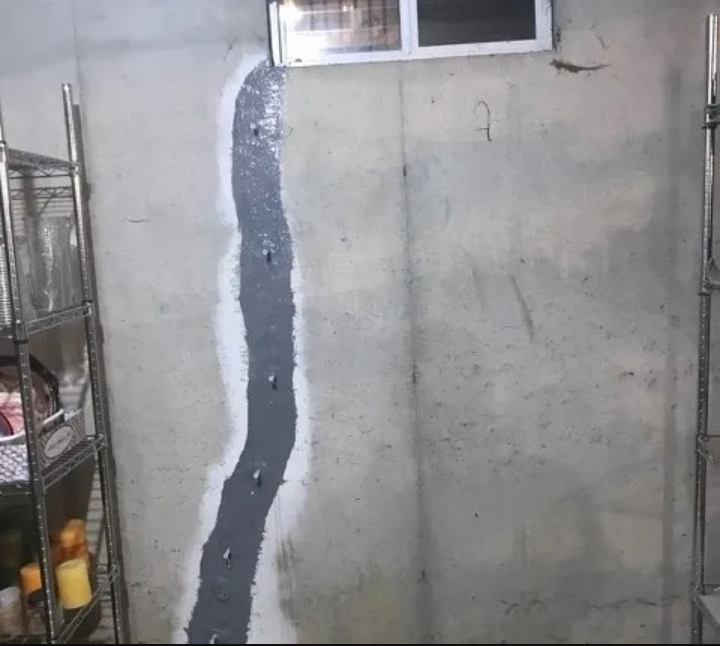
Why You Should Repair Foundation Cracks Quickly
Foundation cracks might seem like minor imperfections, but ignoring them can lead to bigger headaches—both structural and financial. In the harsh climate of Bedford, NH, where shifting seasons keep your foundation under constant pressure, a “wait and see” approach isn’t just risky—it’s shortsighted.
First, small cracks have a troublesome tendency to grow. What starts as a hairline fissure from natural settling could expand into a gaping issue as soil shifts or moisture penetrates. Left unchecked, these tiny openings can affect your foundation’s structural integrity, leading to sloping floors, sticking doors, and—if things really spiral—compromised load-bearing walls.
Then there’s water infiltration to consider. Basements in Bedford already face challenges from heavy spring rains and fluctuating groundwater levels. Cracks, no matter how small, act as gateways for water, setting the stage for mold, mildew, and wood rot. Wet or damp basements aren’t just unpleasant—they’re a breeding ground for long-term damage that’s expensive to fix.
Beyond the practical headaches, repairing cracks sooner rather than later has financial benefits. A home with visible or worsening foundation damage is a red flag for buyers, which can bring down your home’s resale value or throw a wrench into a sale during inspections. Repairing cracks promptly ensures your property remains an asset, not a liability.
Finally, it’s a simple matter of longevity. A strong, intact foundation keeps the rest of your home stable. Investing in repairs now means you’re preserving your property for the long haul. The fix might cost you today, but the payoff is living worry-free tomorrow. When it comes to foundation cracks, quick action isn’t optional—it’s necessary.
The Impact of Bedford, NH's Climate on Foundations
Living in Bedford means dealing with a climate that doesn’t go easy on your home’s foundation. The region’s distinct seasons bring challenges that force homeowners to stay alert year-round.
- Winter Freeze-Thaw Cycles: If there’s one thing New England winters are known for, it’s the brutal cold. When the ground freezes, it expands, and when it thaws, it contracts. This constant push-and-pull stresses your foundation, slowly prying at its seams. Over time, this can lead to cracks that start small but won’t stay that way for long. Think of it as nature’s version of a stress test—and your foundation’s getting tested every winter.
- Spring Rainfall: Just when you thought your home survived the winter, spring comes rolling in with its heavy rains. Bedford’s wet springs oversaturate the soil around your house, turning it into a soggy mess. This waterlogged earth shifts unpredictably, pressing against your foundation with newfound pressure. Excess moisture also increases the risk of hydrostatic pressure—basically, invisible hands pushing water into your basement through any crack it can find.
- Dry Summers: While snow and rain make you worry, don’t let Bedford’s dry summer spells fool you. When soil dries out, it shrinks and pulls away from the base of your home. This leaves gaps and voids under your foundation that compromise its stability. It’s the kind of silent damage that sneaks up on homeowners who don’t pay attention between those seasonal storms.
If you’re a Bedford homeowner, the climate isn’t just background noise—it actively shapes the health of your foundation. The key is staying one step ahead. Keep an eye out for seasonal changes, tackle drainage issues promptly, and learn to see the subtle signs of stress before they become full-blown problems.
Signs Your Foundation Needs Immediate Attention
Not all foundation cracks are created equal. While some can be benign, others scream, “Fix me, now!” Knowing the difference is crucial for keeping minor issues from spiraling into major disasters. Here are the red flags to watch for:
- Noticeable widening or deepening of cracks: If today’s hairline crack starts looking like a chasm next week, it’s time to worry. Progressive changes signal that the problem isn’t just cosmetic but structural—and likely worsening.
- Doors and windows that stick or don’t close properly: Misaligned doors and windows are often subtle signs of foundation movement. When your bedroom door suddenly requires a wrestling match to close, your foundation might be shifting in ways it shouldn’t.
- Floors that appear uneven or sloped: A rolling pencil on your living room floor shouldn’t resemble a scene from a DIY physics experiment. Uneven floors suggest the foundation has settled unevenly, potentially putting stress on the entire home.
- Water leaks or dampness in the basement: Basements are a canary in the coal mine when it comes to foundation issues. Persistent dampness or outright leaks through cracks are a telltale sign that water is eating away at your home’s base.
- Cracks in interior walls or ceilings: Foundation problems don’t stay confined to the basement. Look for cracks branching out like spiderwebs in drywall or plaster—especially above windows, doors, or where walls meet ceilings.
If you spot any of these symptoms, hesitation isn’t your friend. Foundation issues rarely fix themselves, and delays only make repairs more expensive and invasive. Calling in a foundation expert promptly is your best bet for keeping these problems contained and your home standing strong.
DIY vs. Professional Foundation Crack Repair
When DIY Is Sufficient
Let’s be honest—nobody wants to spend a fortune fixing something that a $20 trip to the hardware store could handle. For small, non-structural cracks—think hairline cracks or narrow vertical splits—DIY solutions are usually sufficient. Products like crack fillers or polyurethane sealants are easy to use and can effectively block water and pests from getting in. The key here is consistency: don’t just slap some sealant on and call it a day. Keep an eye on the crack over time. If it starts to widen or shows additional movement, it’s no longer a “weekend project” kind of problem.
When To Call a Professional
There’s a simple rule of thumb: if the crack makes you wince, let a professional handle it. Horizontal cracks, stair-step patterns, or gaps wider than 1/4 inch are immediate red flags—they often point to serious problems like hydrostatic pressure, uneven settling, or even structural instability. Similarly, if you’re noticing water leaks, bowed walls, sticking doors, or sloped floors alongside these cracks, don’t hesitate. Professionals don’t just patch cracks; they identify and address underlying causes, whether that’s poor drainage, soil movement, or improper foundation design. And while the upfront cost may sting, letting major issues fester will burn a far bigger hole in your wallet down the road. This is one situation where “better safe than sorry” isn’t just a cliché—it’s solid advice.

The Cost of Foundation Crack Repair in Bedford, NH
Foundation crack repair can be highly variable in cost, largely dependent on the extent of the damage, the underlying cause, and the method of repair required. At the simpler end of the spectrum, minor repairs like epoxy or polyurethane injection for hairline or small vertical cracks typically range between $300 and $800 per crack. This method is ideal when the damage is non-structural and serves primarily to prevent water infiltration—a relatively straightforward and budget-friendly fix.
For more significant issues, like horizontal cracks signaling hydrostatic pressure or stair-step cracks caused by uneven settling, costs escalate. Repairs involving carbon fiber reinforcement or wall anchors to stabilize the foundation can range from $1,000 to $4,000 per affected area, depending on the size and severity. These methods are designed to prevent further damage and restore structural integrity but require specialized materials and expertise.
The most expensive repairs tend to address foundational settling through methods like underpinning. Installing steel or concrete piers to stabilize a sinking home can cost between $10,000 to $25,000, depending on the number of piers required and the complexity of the soil conditions. This is often the last resort for severe settling issues but is essential to prevent catastrophic structural failure.
Finally, it’s worth accounting for drainage improvements like regrading or installing French drains. While not a direct crack repair, these measures can cost $2,000 to $5,000 and are crucial for addressing water issues that could lead to future cracks.
Ultimately, early intervention is the key to keeping costs manageable. A minor repair today could save you tens of thousands of dollars down the road.
Maintaining Your Foundation After Repair
Foundation repair isn’t the finish line—it’s only part of the journey. The real battle comes afterward, in keeping problems from creeping back. A little effort today can save you from shelling out for major fixes later. Here’s how:
- Keep an Eye on Things: Set a reminder to check your foundation every few months. Look for new cracks or changes to existing ones. Small hairline cracks can sneak up on you, but catching them early is half the battle. A cheap ruler or crack monitor kit can help you track if they’re widening.
- Manage Water Like a Pro: Water is your foundation’s worst enemy. Make sure your gutters are free of gunk and extend downspouts at least five feet from your house. If water’s pooling around your home after it rains, address it now—adjust grading or install a French drain. Hydrostatic pressure waits for no one.
- Mind the Soil: Think of the dirt around your house as the foundation’s first line of defense. Keep it stable by maintaining consistent moisture levels. During Bedford’s dry summers, water the soil just enough to prevent it from pulling away. In rainy seasons, don’t let it oversaturate. Balance is everything.
- Regular Inspections: Treat your basement or crawl space like a high-maintenance partner—check it often. Look for signs of water intrusion, excess humidity, or funky smells that could point to mold. Even subtle dampness can lead to big issues for your foundation and air quality. A dehumidifier isn’t a bad idea for added peace of mind.
By staying proactive, you’re not just preventing problems—you’re protecting your investment. A strong foundation is what holds your home together, literally and financially. Keep it that way.
Final Thoughts
Foundation cracks might not seem like a big deal at first glance, but ignoring them is like pressing snooze on a problem that won’t go away. In Bedford, NH, where the seasons hit your home’s foundation with a mix of freezing, thawing, soaking, and drying, cracks are practically inevitable. The real question isn’t if they’ll show up — it’s what you’ll do about them when they do.
The good news? Most cracks can be addressed effectively if handled early. Whether it’s a quick DIY fix for a hairline crack or calling in the pros to deal with something more serious like a horizontal gap, the key is to pay attention and act fast. Every delayed repair risks turning a manageable issue into a money pit, and no one wants that.
Think of your foundation like the backbone of your home—keeping it in good shape isn’t just about preventing water leaks or uneven floors; it’s about peace of mind. Stay ahead of problems by knowing the warning signs, scheduling periodic inspections, and keeping up with basic maintenance. A little vigilance now can save you a lot of hassle down the road.
Reviews from Happy Customers
Our top priority is customer satisfaction, and we work closely with clients to understand their unique needs and goals.




